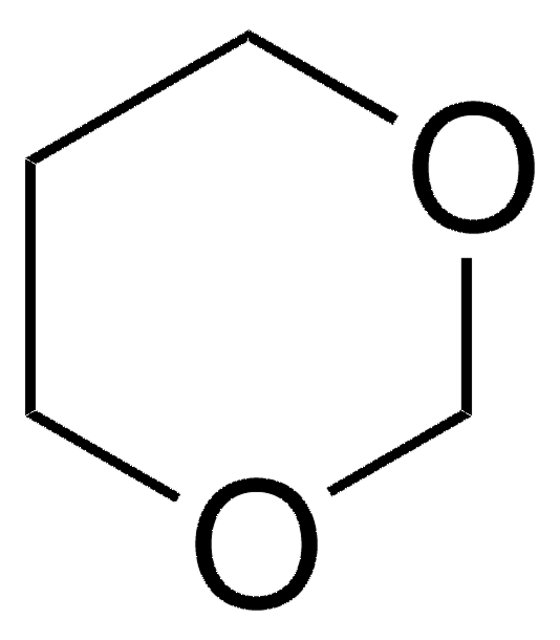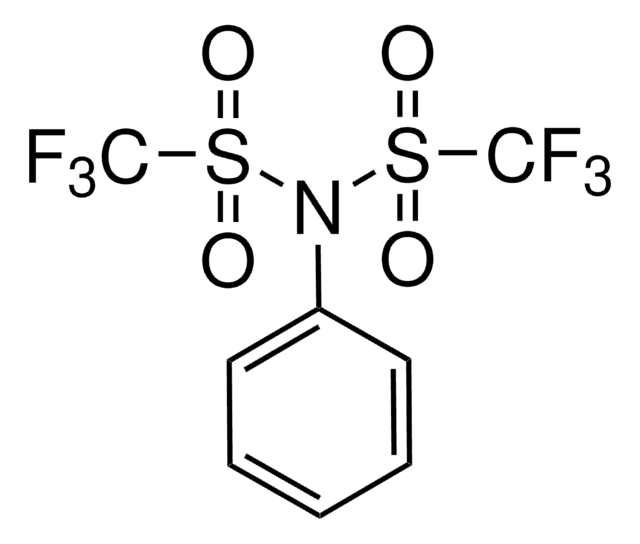D201863
1,4-Dioxane
ReagentPlus®, ≥99%, contains ≤25 ppm BHT as stabilizer
Synonym(s):
Diethylene oxide, Dioxane
About This Item
Recommended Products
vapor density
3 (vs air)
Quality Level
vapor pressure
27 mmHg ( 20 °C)
40 mmHg ( 25 °C)
product line
ReagentPlus®
Assay
≥99%
form
liquid
autoignition temp.
356 °F
contains
≤25 ppm BHT as stabilizer
expl. lim.
22 %
technique(s)
thin layer chromatography (TLC): suitable
refractive index
n20/D 1.422 (lit.)
pH
6.0-8 (20 °C, 500 g/L)
bp
100-102 °C (lit.)
mp
10-12 °C (lit.)
density
1.034 g/mL at 25 °C (lit.)
SMILES string
C1COCCO1
InChI
1S/C4H8O2/c1-2-6-4-3-5-1/h1-4H2
InChI key
RYHBNJHYFVUHQT-UHFFFAOYSA-N
Looking for similar products? Visit Product Comparison Guide
Related Categories
Application
- To synthesize 1,3-diamines and amino alcohols via 2-azaallyl anion benzylic ring-opening of aziridines.
- In the RAFT polymerization of acryclic acid.
- In the synthesis of cross-linked triblock copolymer hydrogels.
Legal Information
Signal Word
Danger
Hazard Statements
Precautionary Statements
Hazard Classifications
Carc. 1B - Eye Irrit. 2 - Flam. Liq. 2 - STOT SE 3
Target Organs
Respiratory system
Supplementary Hazards
Storage Class Code
3 - Flammable liquids
WGK
WGK 3
Flash Point(F)
51.8 °F - closed cup
Flash Point(C)
11 °C - closed cup
Certificates of Analysis (COA)
Search for Certificates of Analysis (COA) by entering the products Lot/Batch Number. Lot and Batch Numbers can be found on a product’s label following the words ‘Lot’ or ‘Batch’.
Already Own This Product?
Find documentation for the products that you have recently purchased in the Document Library.
Customers Also Viewed
Our team of scientists has experience in all areas of research including Life Science, Material Science, Chemical Synthesis, Chromatography, Analytical and many others.
Contact Technical Service








